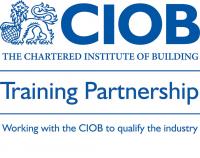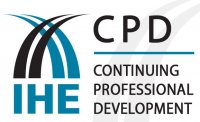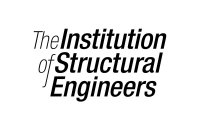This course contributes to the under-pinning knowledge required to demonstrate the achievement of the ICE Attribute No.4, and equips delegates with the ability to exercise sound, independent engineering judgement, so as to take responsibility within this field.
The second in a series of three health, safety and welfare courses, this course contributes to the Appreciation & Knowledge elements of the following:
- IStructE Core Objectives 3.2 & 3.3
- CIHT Guidance Notes Section 4 & Appendix E
- CIWEM Mandatory Competency C2
- GSL Competency IV
Please also see Health, Safety & Welfare Legislation and Health, Safety & Welfare - Site & General Safety.
Also available as an online training course.
Please note the online version of this training course will be split into modules.
Delegates attending this course will complete an end-of-course assessment.
Aims & Objectives:
Recent changes in Health and Safety law have brought about the need for a significant change in the approach to how Safety, Health and Welfare issues are managed, and how this is integrated with routine tasks carried out and the technical decisions made by engineers on a daily basis.
To facilitate this, the person must have an understanding of:
- the detail of the individual Regulations that are the focus of this course,
- the principles behind those regulations, and
- the bigger picture, how they fit together to form the basis of informed management decisions, and the cooperation and communication required between the different parties involved in construction projects.
The person must be able to demonstrate how they will apply the principles behind the legislation when addressing typical and foreseeable hazards, and addressing any consequent risks associated with their work tasks.
They will have to show how they have established their understanding of their Clients’ and end users’ needs, of the constraints and opportunities specific to individual projects and how they would address departures from established practice, where and when this is considered necessary.
Course Outline:
The course builds on an awareness of the basis of U.K. law, and in particular the principles established in the Health & Safety at Work etc Act 1974, and the framework established by subsequent European Directives. (For those who have not attended the seminar on this topic, there will be a short but thorough review of this background).
Delegates will be given detailed information on the key Regulations that affect their area of work; they will be able to review the guidance available and appreciate the special legal status of the related and approved codes of practice.
Special attention will be devoted to the Construction (Design and Management) Regulations 2015, and the Legal series Guidance, “Managing health and safety in construction”, reference L 153.
The stated objective of this legislation is to ensure that projects are carried out in such a way that those who carry out, or who are affected by the construction of that project, and those who use or look after that building, structure or entity throughout its life are not exposed to harm.
The interplay of the different parties who have legal duties defined in the legislation will be reviewed.
How the duties contained in other Regulations, including Work at Height, the Lifting Operations and Lifting Equipment Regulations, (LOLER), the Control of Substances Hazardous to Health (COSHH), the Regulatory Reform Order (Fire Safety) and others that tie in with the management, planning and co-ordination roles within the CDM Regulations, will be considered in detail.
Delegates will be made aware of the impact of recent changes in enforcement, fees for intervention (FFI), the decisions of the Courts relating to Corporate Manslaughter and individuals’ responsibility, and the impact of the costs associated with Civil Law claims.
It is important that all duty holders understand the issues that relate to matters that will fall within the contractors’ control, and these will be discussed. More detail of these matters, contained in Part 4 of the Regulations, are covered in more depth in the third course in the series “Site & General Safety”.
Mode of Delivery:
The day will be interactive, with all delegates expected to participate in discussion and contribute to debate.
The delegates' initial knowledge will be assessed, and they will work in small groups to simulate the communication and team work required in the holistic management of engineering and construction projects.
The course content will address and questions will be asked, as to how buildability, sustainability, value engineering and whole life costing will feature in the delegates assessment of risk, and their appreciation of "so far as is reasonably practicable" when making decisions.
A written assessment is included, with questions designed to measure judgement as well as knowledge and understanding.
Delegates receive a folder with detailed notes supporting the course content. These notes contain pointers for further research, to assist planning for effective project implementation.








